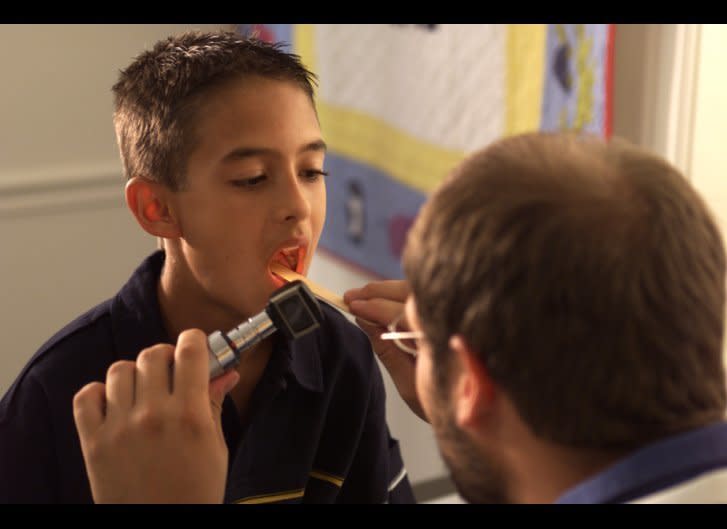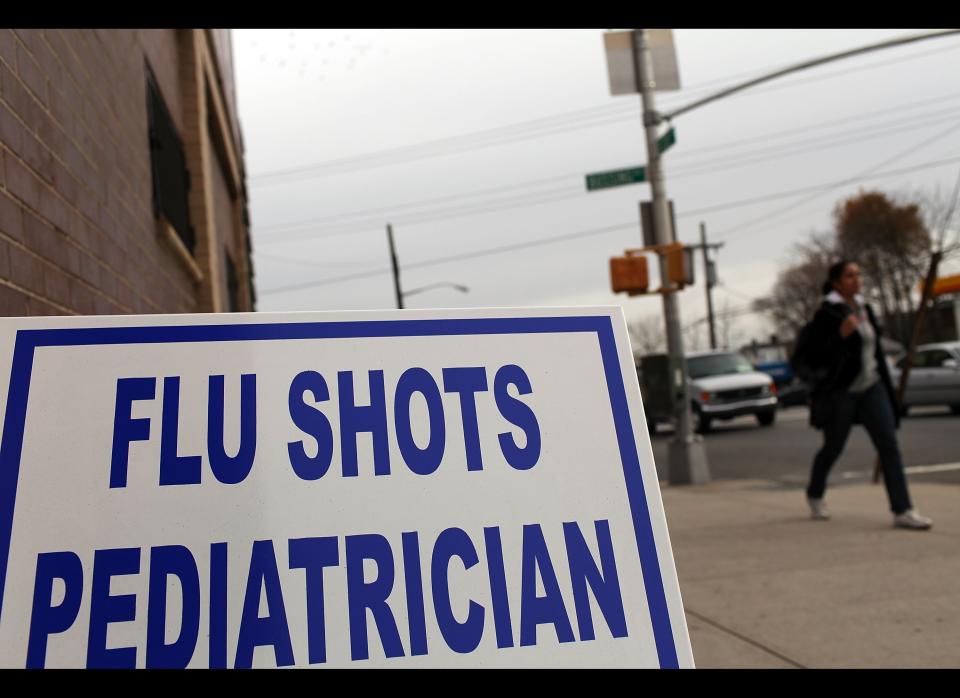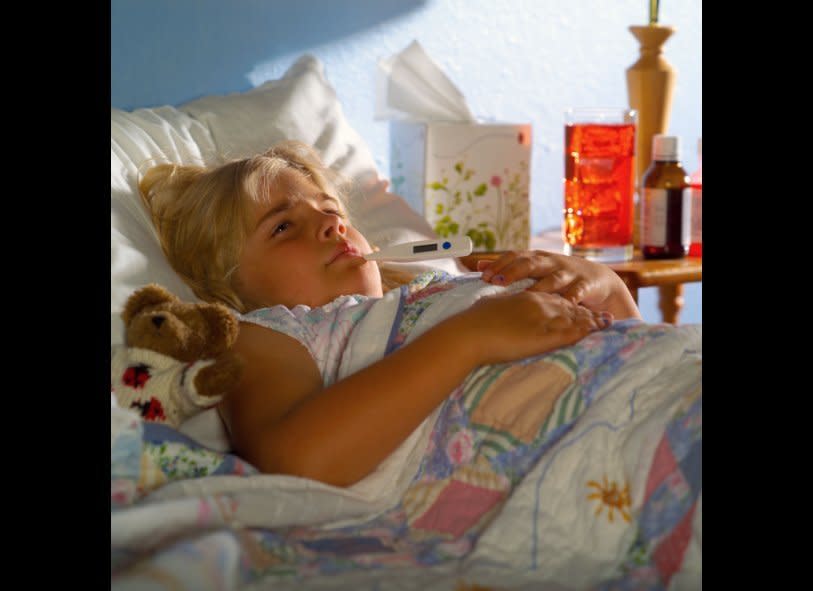Texas Surge In Anti-Vaxxers Could Be Driving Its Latest Measles Outbreak
A small measles outbreak in Ellis County, Texas, has infected six people ranging in age from 8 months to 27 years. None of them had been vaccinated for the disease. Skipping vaccinations is a growing trend in the state, and public health experts have been warning about outbreaks like this for years.
The Texas Department of State Health Services tweeted the news about the initial patient last Friday, and then by Tuesday there were five more cases. Because the first patient went to a movie theater, officials warned residents to watch for symptoms if they had been to that theater the same day.
The subsequent five cases were not linked to exposure at the cinema, officials said.
Texas is extremely vulnerable to measles outbreaks for several reasons. It is one of 19 states that allow parents to opt out of public school vaccination requirements on the grounds of their “conscientious” beliefs — as opposed to medical need. The rate of Texas parents requesting “conscientious exemptions” to vaccinating their children has risen steadily since the law was changed to allow that in 2003.
Texas could be called a battleground state for the anti-vax movement. It is home to Texans for Vaccine Choice, a PAC that promotes politicians who support its donors’ distrust of vaccines. And it’s the home of Andrew Wakefield, the disgraced U.K. doctor who was stripped of his medical license after he was found to have falsified data in a much-hyped study that purported to show a causal link between the measles-mumps-rubella shot and autism. His paper has since been retracted.
Conditions like these have Dr. Peter Hotez, dean of the National School of Tropical Medicine at Baylor College of Medicine in Houston, convinced that Texas will likely see even larger measles outbreaks. In October 2016, Hotez published a column in PLOS Medicine predicting that the state’s declining vaccination rates would result in an outbreak in either the winter or spring of 2018 that might eclipse the 2013 Texas outbreak. That outbreak was linked to a megachurch where the founders expressed suspicion that childhood vaccines could cause autism — a baseless claim that has been refuted in several studies involving thousands of children.
“As both a vaccine scientist and autism parent who has written about why vaccines don’t cause autism, to me these drops in vaccine coverage represent a potential self-inflicted wound,” Hotez told HuffPost. “With this latest measles outbreak in North Texas, we now have the wound and it’s an ugly one. I hope it does not expand into a much larger outbreak.”
In the 2003-2004 school year, the first in which the conscientious exemption was available, the parents of 2,314 students filed for one. By the 2016-2017 school year, that number was 52,756 students. And those figures don’t include the number of home-schooled children who may not be vaccinated, Hotez said.
“Texas has seen a 20-fold increase in non-medical vaccine exemptions since 2003,” the doctor said. And the result is that “we have some schools with 20 to 40 percent of the children not being vaccinated.”
Measles is a very contagious virus with a very high “basic reproduction number” of 12 to 18. That means every person who gets measles can expect to transmit the virus to 12 to 18 unvaccinated people. In contrast, the reproduction number of the Ebola virus during the most recent outbreak was between 1.5 and 2.5. Because measles is so contagious, communities need to be vaccinated at a rate of 90 to 95 percent for herd immunity to stop the disease from spreading.
It can take as long as three weeks before someone exposed to the virus begins to show symptoms, which include the tell-tale rash, high fever, cough, runny nose and red, watery eyes. Generally, infants don’t receive their first measles vaccine until at least 12 months, with a second shot completing the series at around 4 to 6 years old.
Publicly available data about the rate of personal-belief exemption requests in Texas show that some schools are already well below the measles vaccination rate needed to achieve herd immunity. In the latest outbreak, officials say the virus has not been found to be infecting people at schools or day care centers ― but that’s this time.
Take the six current cases, which officials say have connections to the towns of Waxahachie and Midlothian. The school districts in both towns have a personal-belief exemption rate of 1.24 percent — about 28 percent higher than the state average. Two private schools in Waxahachie report even higher rates: Life School has a rate of 1.76 percent, while Waxahachie Preparatory Academy reported a whopping 22.89 percent. Ellis County overall has an exemption rate of 1.21 percent.
Three counties surrounding Ellis also have higher-than-average rates of personal belief exemptions. Tarrant County, which has a countywide exemption rate of 1.27 percent, has 15 private schools with exemption rates ranging from 5.2 percent to 41 percent. Johnson County, which has an overall exemption rate of 1.55 percent, has five schools with rates ranging from 5.4 to 32.5 percent. Henderson County, with an overall exemption rate of 1.1 percent, has one school with an exemption rate of 7.58 percent.
Recent measles outbreaks in the U.S. offer some hope that public concern and government action can push vaccination rates back up again. As a response to the 2014 measles exposure in Disneyland that infected 111 people, California passed a tougher vaccination law the following year, banning both religious and personal belief exemptions for children entering school and daycare.
Vaccines expert Patsy Stinchfield hopes that other states will follow California’s example and do away with the personal belief exemption.
“‘Personal belief exemptions’ sounds like ‘I am making a decision for myself personally,’” said Stinchfield, a senior director of infection prevention and control at Children’s Hospital Minnesota. “But the virus doesn’t think that way or work that way.”
Last summer, Minnesota experienced a measles outbreak concentrated among Minneapolis’ Somali immigrants, who were afraid the shots might cause autism in their children. In total, 79 people got measles, most of them under 10 years old. Seventy-one of the patients had not been vaccinated for measles.
“The virus doesn’t care if you are a person with personal belief exemptions or a newborn baby or a pregnant unvaccinated woman or a grandma undergoing chemotherapy for breast cancer,” Stinchfield said. “All the measles virus knows is that person is not immune.”
Also on HuffPost
Hepatitis B

DTaP

MMR

Chickenpox

Haemophilus Influenza Type B (Hib)

Polio (IPV)
![Polio vaccine is "such a success," says Dr. Gold-Von Simson. "Because of the vaccine, there are no more cases [of polio]." There are no more in the United States that is. The virus hasn't been eradicated worldwide, so kids still get the IPV, or inactivated polio vaccine, which is a shot containing killed virus. Polio is bad news, and can cause paralysis and even death. Children are given the IPV at two months, four months, between six to 18 months, and then again between the ages of four and six years.](https://s.yimg.com/ny/api/res/1.2/Yim8tSudnGHaE3P3fMywRw--/YXBwaWQ9aGlnaGxhbmRlcjt3PTk2MA--/https://img.huffingtonpost.com/asset/55c230a31400002e002e204a.jpg)
Pneumococcal Conjugate (PCV)

Influenza (flu)

Rotavirus (RV)

Hepatitis A

Meningococcal Conjugate (MCV4)

Human Papillomavirus (HPV)

Love HuffPost? Become a founding member of HuffPost Plus today.
This article originally appeared on HuffPost.

